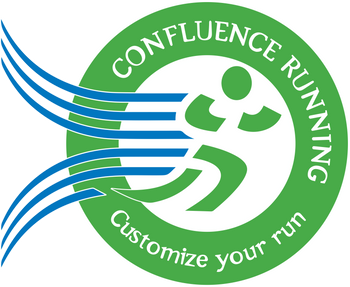The Science of Overload: Achieving Fitness Goals While Preventing Overtraining

The Concept of Progressive Overload and Overtraining: Striking the Balance for Optimal Fitness Gains
In the realm of fitness and performance, understanding progressive overload and the pitfalls of overtraining is crucial to achieving your goals effectively and sustainably. This foundational concept ensures that your body is adequately challenged to adapt and improve, without crossing into territory that can hinder progress or lead to injury. Let’s explore these principles in depth.
Learn More: Muscular Anatomy | Circuit Training | Overview of Basic Biomechanics
Understanding Progressive Overload
Progressive overload is a structured approach to training that involves gradually increasing the intensity, duration, type, or frequency of your workouts. This progressive challenge encourages your body to adapt by building endurance, strength, and muscle size over time. It’s the key to long-term improvement in fitness performance.
Imagine your fitness level is represented on a scale of 1 to 100, where 1 is sedentary and 100 is an elite endurance athlete. If your current fitness level is 60, completing a workout—whether it’s cycling, running, or strength training—will initially reduce your fitness level due to fatigue. However, with proper rest and recovery, your body compensates and then supercompensates, rebuilding stronger than before.
The process involves:
- Workout Phase: The workout acts as a stimulus, temporarily reducing fitness due to fatigue.
- Recovery Phase: Rest, sleep, stretching, and good nutrition allow your body to repair and grow stronger.
- Supercompensation: Your fitness level rebounds above its initial baseline, priming you for your next workout.
Overload Phases and Detraining
Optimal Overload
For progressive overload to work, each workout must challenge the body appropriately. Consistency is critical—frequent, moderately challenging workouts are more effective than sporadic, intense efforts. Over time, the steady application of training stress results in gradual, sustainable fitness gains.
Detraining
When there is too much rest between workouts, your body begins to lose the fitness it gained. For instance, if you delay the next workout past the point of supercompensation, your fitness level will decline, negating your hard work.
Overtraining: Phase 1 and Phase 2
While undertraining results in stagnation, overtraining occurs when the balance between training stress and recovery is disrupted.
Overtraining Phase 1
- Characteristics: Too little rest between workouts causes cumulative fatigue. While it may not initially harm performance, it increases the risk of more severe overtraining.
- Planned Use: Phase 1 can be strategically employed in training plans, such as during "crash weeks" of high-intensity training, followed by extended recovery to allow for significant supercompensation.
Overtraining Phase 2
- Characteristics: Prolonged inadequate recovery leads to a plateau or decline in performance. Symptoms include physical fatigue, lack of motivation, and mental burnout.
- Impact: Your body no longer compensates or supercompensates, and recovery becomes ineffective. This phase can lead to long-term setbacks if not addressed.
Striking the Balance: Recovery Is Key
The secret to maximizing progressive overload lies in recovery:
- Sleep: Essential for muscle repair and hormonal balance.
- Nutrition: Proper post-workout and lifestyle nutrition fuel recovery and growth.
- Active Recovery: Light activity, stretching, or massage increases blood flow and aids in the repair process.
- Stress Management: Avoid overloading other areas of your life that can compound training stress.
Summary
Progressive overload is the cornerstone of effective training, promoting continuous improvement through carefully planned workouts and recovery phases. By understanding the phases of overload, the dangers of detraining, and the risks of overtraining, you can create a sustainable training plan tailored to your needs.
Remember, fitness gains don’t occur during workouts but in the recovery that follows. Aim for consistency, listen to your body, and respect the balance between effort and rest to achieve your peak potential.
All HWS Lecture Series Links
| Lectures | Link |
|---|---|
| Mastering SMART Goals | Mastering SMART Goals |
| Concept of Overload | Concept of Overload |
| Periodization Theory | Periodization Theory |
| Muscular Anatomy | Muscular Anatomy |
| Overview of Basic Biomechanics | Overview of Basic Biomechanics |
| Metabolism and Energy Systems | TBD |
| What is VO2 Max? | What is VO2 Max? |
| Overview of Heart Rate Training Zones | TBD |
| Biological Discussion Wrap-Up | TBD |
| Dynamic Footwear Science | Dynamic Footwear Science |
| Basic Nutrition | Basic Nutrition |
| Circuit Training | Circuit Training |
| Pyramid Training | Pyramid Training |
| Compound Sets vs Supersets | Compound Sets vs Supersets |
| Myers Briggs Personality & Fitness | TBD |
| How to Improve Your Motivation in Fitness | TBD |
| Positive & Negative Reinforcement & Punishment | TBD |
| How do Plyometrics Aid in Adaptations? | How do Plyometrics Aid in Adaptations? |
| Enhance Your Fitness with Recovery Techniques | TBD |
Tags for the Concept of Progressive Overload & Overtraining
progressive overload benefits, understanding overtraining phases, how to avoid overtraining, progressive overload training tips, stages of overtraining, workout recovery strategies, effects of overtraining on performance, progressive overload vs overtraining, fitness recovery importance, signs of overtraining in athletes, building strength with progressive overload, recovery phase in fitness, supercompensation in training, balancing training and rest, ideal workout intensity levels, detraining effects on fitness, crash week training plans, fitness adaptation strategies, mental impact of overtraining, sustainable fitness growth methods



